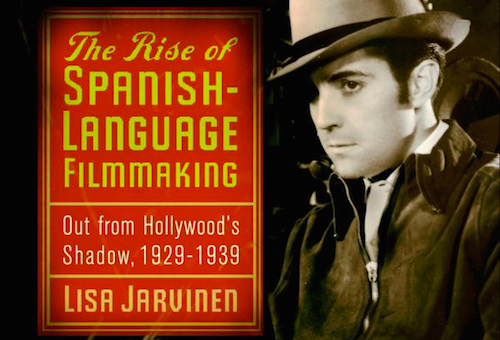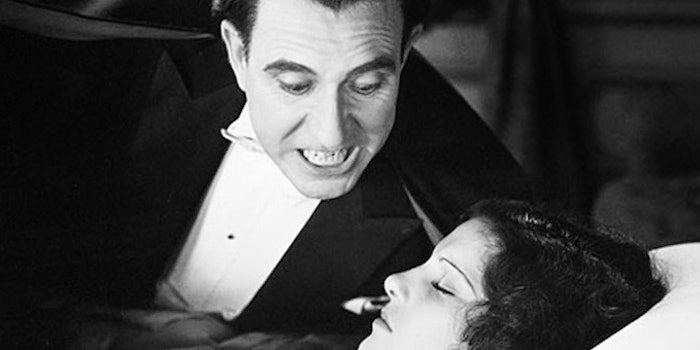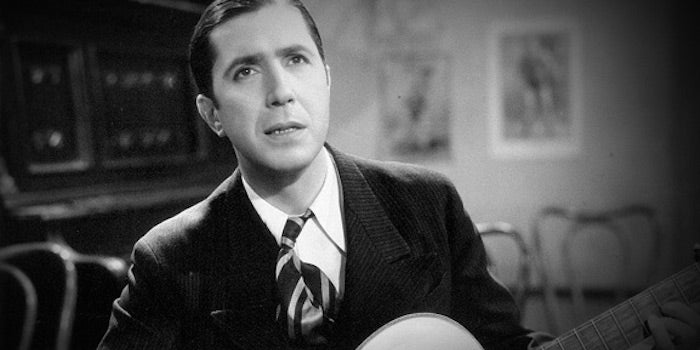
As my previous blogs indicate, we are now in the heavy research phase for our film exhibition, Recuerdos de un cine en español: Latin American Cinema in Los Angeles, 1930-1960, which will debut in 2017 as part of the Getty’s Pacific Standard Time: LA/LA initiative. After reading Colin Gunckel’s book, I’ve now finished Lisa Jarvinen’s excellent The Rise of Spanish-Language Filmmaking: Out from Hollywood’s Shadow, 1929-1939 (Rutgers University Press, 2012). Jarvinen’s book looks at how Hollywood tried to come to terms with the Spanish-language market, especially in Latin America, once sound technology forced studio producers to either make films in Spanish, dub them or add subtitles. Whereas the studios had simply translated intertitles for foreign markets in the silent era, the arrival of sound necessitated the recognition of cultural differences, challenging Hollywood producers who were unaccustomed to making concessions to foreign audiences.
Lisa Jarvinen, who is an Associate Professor at La Salle University, begins her narrative by describing the new situation facing Hollywood, once sound technology was introduced. The stakes had risen as Latin America accounted for 30% of all U.S. foreign trade by 1930. Spanish-speaking countries represented merely 16% of all return profits in the mid-1920s. Ironically, Hollywood’s first Spanish-language feature film was produced independently, Sombras habaneras (1929), starring René Cardona and Jacqueline Logan. It failed miserably due to low production values and the clash of Spanish accents, a fate shared by other independent films, like La rosa de fuego (1930) and Alma de gaucho (1930).
 Drácula (1931)
Drácula (1931)
By 1930, most of the studios had decided to produce multi-language versions of their films, completing the same film in English, French, German and Spanish, but with different actors. Thus, Universal produced its now famous Spanish version of Dracula (1931), starring Spanish actor Carlos Villarías and Mexican actress Lupita Tovar. Meanwhile, MGM produced Monsieur Le Fox (1930), the Spanish version of Men of the North, both starring Mexican actor Gilbert Roland, and Paramount set up a whole foreign language department in their Joinville studio in Paris to turn out as many as eight different language versions, always using the same sets and costumes. Nevertheless, the foreign versions were produced for significantly less money than the English originals, often starring little-known actors. Despite criticism of these versions in the press, Jarvinen establishes – against conventional wisdom – that Spanish versions of Hollywood films usually did better at the box office in Latin America than the English originals.
However, there were problems. Hollywood treated all forms of spoken Spanish as the same, disregarding the fact that sound technology suddenly made class and social hierarchies, as well as national characteristics, clearly audible in films. That led to another problem, namely clashes between Spaniards and Mexicans for starring roles. Jarvinen mentions the case of Warner Bros.’ El hombre malo (1930), which was heavily criticized by the Mexican-American press, supposedly because Spaniards in the cast and crew had descriminated against Mexican actors. Also, the film’s star, Antonio Moreno, played the old steretoype of the Mexican bandito. Hollywood reacted to such criticism by stating that Hispanics were “too sensitive,” indicating its insensitivity to cultural difference (p. 79-80).

Carlos Gardel
Not all Spanish language films produced in Hollywood were versions of English films. A certain percentage were Spanish originals, although usually produced with a significantly smaller budget than English-language works. One exception being the Carlos Gardel films, distributed by Paramount, which were produced in Joinville and Astoria and earned fortunes for the company, before Gardel’s untimely death in 1935. Once production of alternate language versions stopped in 1932, due to better dubbing and subtitling technology, only a few studios continued producing Spanish originals, among them Fox. Shockingly, the studios did not consider Latin America a large enough market to justify dubbing, until Mexican and Argentine films started giving Hollywood a run for their money.
Between 1932 and 1935, Fox not only produced numerous Spanish language films, but gave their Hispanic talent more autonomy to pursue their own cultural agendas, thanks in part to the incredible box office success of José Mojica in El precio de un beso (1930), the Spanish version of One Mad Kiss. An opera star, Mojica would make no less than 16 Spanish originals, many of them light musicals, but two films he considered his best: La cruz y la espada (1934) and Las fronteras del amor (1934). The former title survives at UCLA, as will three other Fox Spanish titles: Marido y Mujer (Bad Girl, 1931), Granaderos del amor (1934), and Angelina o el honor de un brigadier (1934).
By the mid-1930s, both Mexico and Argentina had begun producing feature films that constituted a serious challenge to Hollywood’s hegemony. In particular, the box office hit Allá en el rancho grande (1936) led Hollywood to cease Spanish-language production and, eventually, move towards dubbing all products for Latin America. Only a few independents continued to produce Spanish films in Hollywood, e.g. La vida bohemia (1938) and Verbena trágica (1939), both produced by Cantabria Films and distributed through Columbia.
In reviewing Spanish-language Hollywood films from the 1930s, Jarvinen concludes: “Although the studios cared about the potential profits from Spanish-speaking markets, attempts to cater specifically to those markets displayed signs of marginality whether through cultural missteps in films, or treatment of Spanish-speaking film professionals or disregard of linguistic variations in Spanish” (p. 161). Nevertheless, this early chapter in Hollywood’s relations with Latin America remains instructive for those studying cultural imperialism in all its forms.
< Back to Archival Spaces blog






 Mobile Navigation
Mobile Navigation

